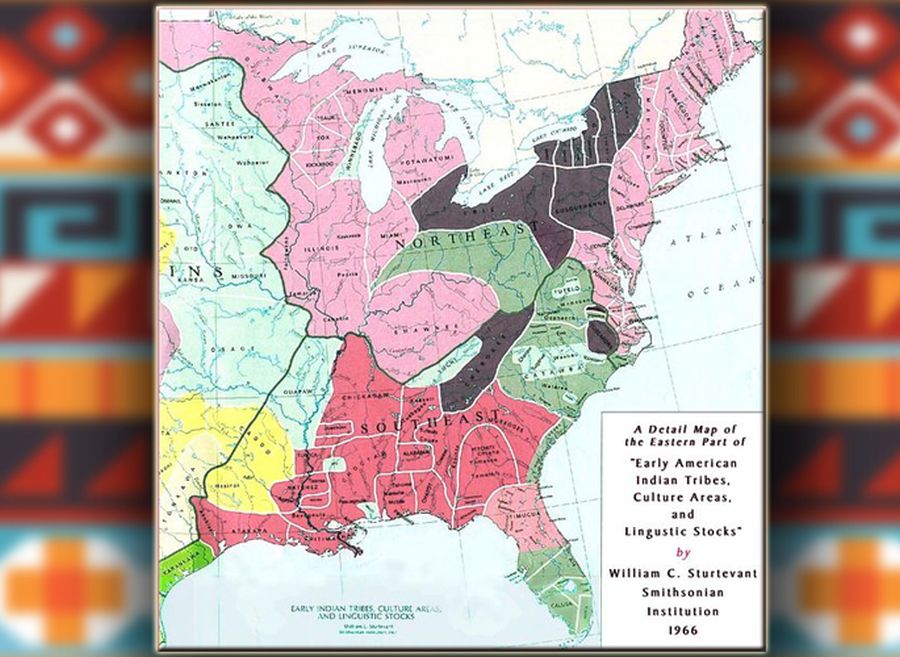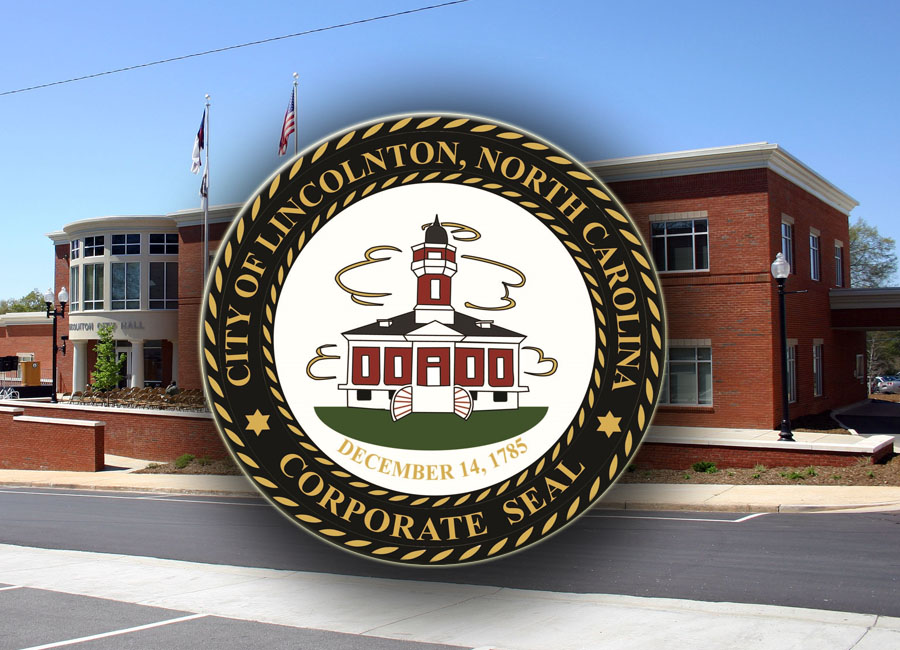- Tuesday, 30 December 2025
- Have a HOT TIP? Call 704-276-6587 or E-mail us At LH@LincolnHerald.com
The Cherokee And Catawba Nations And The Revolutionary War

In this, another in the series of articles from the SAR and DAR leading up to America's 250th birthday in 2026, we learn more about North Carolina’s Native American population.
It is tempting to think of the American Revolution as a war between the American patriots on one side and the British on the other. This was not the case. Many colonists were loyalists who did not want independence from England. Some loyalists fought against their neighbors, who wanted independence. North Carolina’s Native American population also had to decide whether to support the Revolution. By the time of the Revolution, this was primarily the Cherokee and Catawba people though small numbers of other indigenous peoples were still living in North Carolina.
The nearly two hundred years before the Revolution saw the loss of a huge number of North Carolina’s Native population. Most experts agree that in 1600 the population of the Native American people was at least ten times greater than it was in 1775. That means in less than two hundred years, the population of Native American tribes had lost nine out of every ten people.
War caused some of this population loss. Among the bloodiest was the war fought by the Tuscarora tribe from 1711 to 1712. An even worse enemy was disease. The Native American tribes and their people had no natural immunity to many European diseases, including measles and typhus. The deadliest killer, however, was smallpox. Time after time this dreaded illness destroyed entire Native American villages. A smallpox epidemic killed thousands of Cherokee people in 1738 and 1739. In 1759, smallpox killed about two-thirds of the Catawba people, leaving about 500 of that tribe’s population of 1,500. To put the gravity of this loss into perspective, the ancestral lands of the Catawba Nation extended through the Piedmont region of North and South Carolina and into southern Virginia.
By the time of the Revolution, very few Native Americans were left in eastern North Carolina. However, many still lived in the western part of the state. Different Native American tribes were important trading partners for the colonists. They traded furs and animal skins for the colonists’ cloth and such manufactured goods as guns, ammunition, axes, and agricultural tools. Gradually, some tribes of Native American people became dependent on this trade. Guns were especially important. Different tribes needed guns to defend themselves against other armed tribes. This trade created problems. As the different tribes of Native American people expanded their hunting grounds to find more deer for the colonists, the more likely they were to trespass on settlers’ farms or to bump into other tribes which lead to conflicts.
The difficulties between the colonists and the British government threatened their trade with Native American people. This forced a decision with each tribe to choose sides or should they stay neutral? Was it even possible to stay neutral? The British promised them weapons. The patriots promised them weapons too but also kept taking their ancestral lands.
The Cherokee were a powerful tribe living in the mountains of present-day North Carolina, Georgia, and Tennessee. They spoke the language of the Iroquois nation but were so spread out that they spoke three separate dialects. In 1775, there were about 12,000 Cherokee people in North Carolina. They lived in villages called Middle Villages or Middle Towns, and grew crops, especially corn. Some lived in log cabins similar to white settlers’ cabins. They had lived in these mountains a long time and regarded the mountains as their home forever, and they were determined to fight to protect their lands.
As the settlers pushed west into the backcountry, they came closer to the Cherokee homeland. In the late 1750s and early 1760s, the English fought the French and Indian War against the French colonies to the north and west. At first, the Cherokee people supported the British colonists in that war. But after some of their warriors were killed by settlers in Virginia, the Cherokee people changed their minds. The tribe then fought several battles against the English settlers in North Carolina. The English defeated the Cherokee, other tribes, and their French allies in that war.
In 1763, King George III prohibited white settlement across the Appalachian Mountains to the west in the Proclamation of 1763. But settlers including Daniel Boone violated this law. They wanted Cherokee land. Some of these settlers considered Native American people were an obstacle to be brushed aside. This caused animosity between the Cherokee people and the settlers, so they decided to side with the British government. They thought this was their best chance to push back the tide of white settlers. They felt that if the British won the war, the British king would reward their support and stop settlers from going to the other side of the mountains and taking their land.
This decision for war was not made hastily. Many meetings were held, and every warrior of the tribe had a chance to speak his mind. Other Native American tribes who were allied with the British tried to talk the Cherokee people into joining their efforts. The British wanted their Native American allies to wait and together attack the settlers at the same time. Finally, the Cherokee people decided they would not wait for the British or anyone else and would launch their own attack.
Early in the summer of 1776, the Cherokees planned attacks all along the southern frontier. A half-Native American woman named Nancy Ward warned the settlers of the plan. Many settlers found refuge at Fort Dobbs, Old Fort, Fort Defiance, and other safe places. When they returned, they found their homes burned and their crops destroyed. Not all were so lucky. About forty settlers had been killed in North Carolina by the end of July. The biggest fight was at Eaton’s Station, in present-day Tennessee. Here a young Cherokee warrior named Dragging Canoe led a war party against a group of frontiersmen in a bloody attempt to stop colonists from settling on Cherokee land.
The colonists reacted swiftly. Most agreed with Thomas Jefferson who wrote, “I hope that the Cherokees will now be driven beyond the Mississippi.” The settlers planned a massive attack. One militia group entered Cherokee country from North Carolina. Another would enter from South Carolina. Still a third would enter from Virginia. These three armies would combine and make a massive assault on the Cherokee people known as the Cherokee Expedition.
The majority of Cherokee fighters returned home in the autumn of 1776 and began rebuilding their villages. They desperately needed a peace treaty. One elder, named the Raven, traveled hundreds of miles seeking peace. Another group went all the way to Williamsburg, Virginia, to meet with Virginia officials. The Cherokees signed a peace treaty in July 1777. According to this treaty, the Cherokees gave up more of their land and agreed to return hostages and property. In exchange the settlers agreed to respect the Cherokees’ property rights.
The treaty should have ended hostilities, but it did not. Many settlers broke the treaty. One group of young Cherokee warriors refused to accept the peace treaty. They were led by Dragging Canoe. These warriors moved farther into the interior of North Carolina, not far from present-day Chattanooga, Tennessee. They built a group of villages that became known as the Chickamauga. Dragging Canoe and his followers maintained their allegiance to the British even after the peace treaty was signed. Fighting continued throughout the war. The war devastated the Cherokees, losing warriors, property, and influence. Most important, they continued to lose their land to settlers. In the 1777 treaty talks, a Cherokee man named Toqua told the settlers: “We are now talking together. The Man above has put it into our hearts to do so this day. But brothers, do you remember that the difference is about our land.” He was right. The difference was about their land.
Another expedition in 1780, under the command of John Sevier and Arthur Campbell, burned a large Cherokee village and some of the Chickamauga villages. Twenty-nine Cherokee people were killed in this expedition, but only one patriot. Afterwards, the Raven told a British official, “The Rebels from Virginia attacked… in such numbers last fall there was no withstanding them, they dyed their hands in the Blood of many of our Women and Children, burnt 17 towns, destroyed all our provisions by which we and our families were almost destroyed by famine this spring.”
The Cherokee people and the Catawba people were enemies. The Catawba people had fought beside the British during the French and Indian War, while the Cherokee people had turned against the British.
The Catawba people lived in the Carolina Piedmont. They were not related to the Cherokee people. They spoke a completely different language called Siouan. Their name survives today in Catawba County and the Catawba River. The Catawba tribe usually got along well with their white neighbors. They were important trading partners. However, they suffered from the same diseases that ravaged other tribes. They survived as a tribe only by taking in other smaller tribes which had also lost many of their people.
The Catawba tribe also faced great pressure to surrender their ancestral homes to land-hungry settlers. As the tribe got smaller, this pressure increased. Shortly before the Revolution, a reservation was established for the Catawba in South Carolina just below the North Carolina border. This reservation was near what is now Rock Hill, South Carolina, about fifteen square miles in size. Most Catawba people lived on the reservation, although small groups continued to live in North Carolina. The Catawba tribe hoped that having their own reservation would protect them from land-hungry settlers. The reservation also brought money into the tribe because they rented part of the land to white farmers. The Catawba tribe felt that they were better off supporting the colonists who had helped establish their reservation. The Catawba tribe feared the British might not protect their right to the reservation. Throughout the war, the Catawba people helped the revolutionaries by returning freedom-seeking enslaved people to their enslavers, tracking down loyalists, and serving as scouts.
The Catawba people suffered for this decision. The British controlled the area around their reservation for much of 1780 and early 1781. The Catawba people fled when the British troops approached. The troops commanded by Lieutenant Colonel Francis Rawdon burned the Catawba village and any Catawba homes they could find. When they returned, they found that “all was gone; cattle, hogs, fowls, etc., all gone.” Still, the Catawba people continued to fight against the British. They fought in several battles in North Carolina, among them at Guilford Courthouse. Many Catawba soldiers served under South Carolina General Thomas Sumter. The Catawba soldiers usually fought as a unit under the command of a white officer. However, one company of forty-one men was commanded by a tribesman named Thomas Drennan. This group served with General Sumter. A Catawba man known as New River led a unit of Native American soldiers fighting in North Carolinian William Davie’s army. Another Catawba hero, John Nettles, had been educated at the College of William and Mary in Williamsburg, Virginia, and was a major in the militia.
The Catawba people earned the gratitude of Carolinians for their support during the Revolution. This gratitude helped them hold onto their reservation. After the war they continued to live there, and some of their descendants live today on the reservation.
The Catawba people remembered the war. One member of the tribe, Peter Harris, had captured a gun at the Battle of Stono. He proudly carried the gun with him for the rest of his life. Another member of the tribe, whose name we do not know, saved Captain Robert Craighead’s life at the Battle of Hanging Rock. Each year he would appear at Craighead’s plantation so that he could be thanked once again by the soldier.
The American Indians in North Carolina fought beside their chosen allies in the American Revolution. But they fought for their own reasons. They were not concerned about the rights of free-born Englishmen. They were interested in protecting their own lands. The Cherokee and the Catawba made their decisions for war based on their best judgment of how they could protect their lands. The Catawba tribe backed the winning side and gained some benefits. Whatever the reasons, these two important Native American tribes were active participants. It was their war, too.

 Jennifer Baker, DAR Vesuvius Furnace
Jennifer Baker, DAR Vesuvius Furnace












